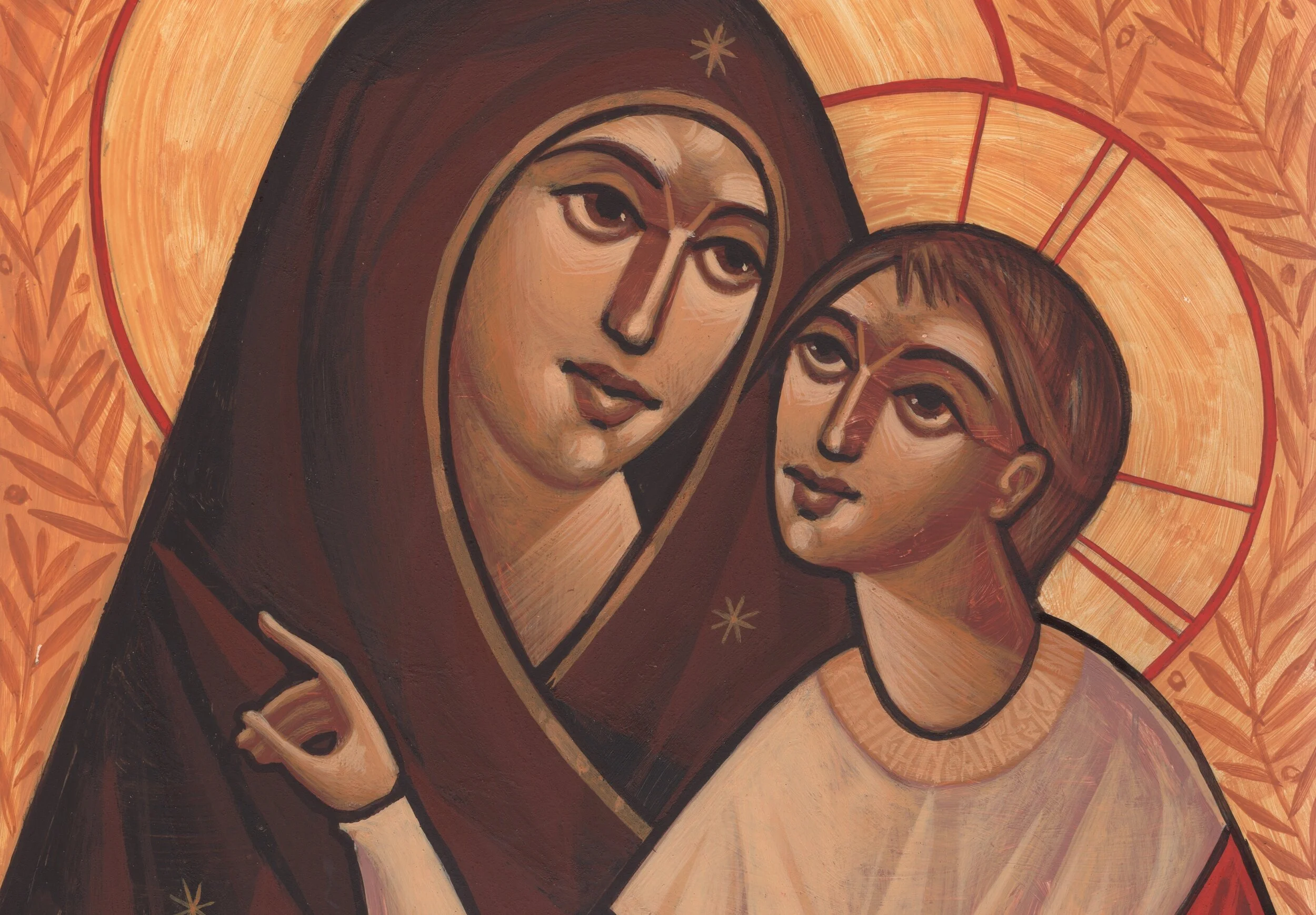preparation and material
The icon begins with a wooden panel coated in either liquified rabbit skin glue or gelatin. Either function as an adhesive, and a thin linen fabric is stretched over the board and pressed onto it. several layers of the adhesive are applied afterward, and the leftover adhesive is mixed with calcium carbonate or chalk. The resulting mixture forms a primer to which the paint adheres. Some boards (the majority of which are used by our studio) are primed with clay.
Powder pigments are mixed with egg yolk and vinegar to produce egg tempera paint, and the paint permanently calcifies onto the surface. For this reason much of what has been painted in egg tempera throughout history survives to this day. Gold leaf is sometimes applied to the background and halos to allude to the divine radiance of the light and glory of Christ.
the drawing
The drawing is crucial to the structure of the icon. The icon follows a specific theological geometry that gives weight to the composition of the icon. The figure begins with a circle within the circle of the halo. the circle is divided into a cross from which the proportions for the face and the rest of the figure extend.
painting
The entire icon is covered in the darkest shades of all the respective components of the icon. This stage is called the proplasmos, and from there lighter and lighter colours are added to the proplasmos. This process is called enlightenment or illumination and the iconographer uses light to bring the icon to life, representative of the life we receive from Christ in His light. The colours are not chosen at random, but rather express through visual associations the qualities that the depicted were glorified in Christ with.








